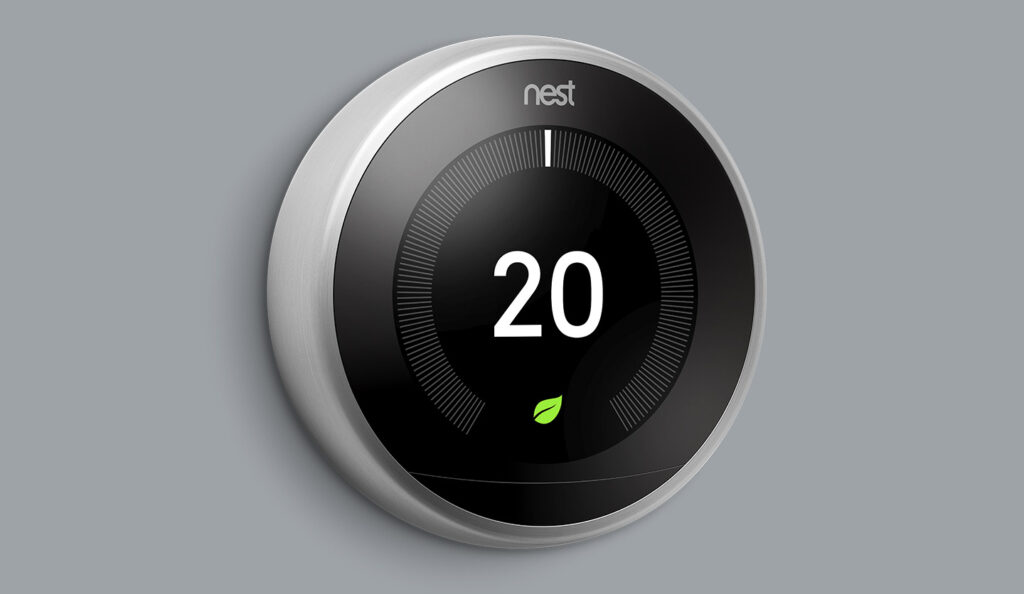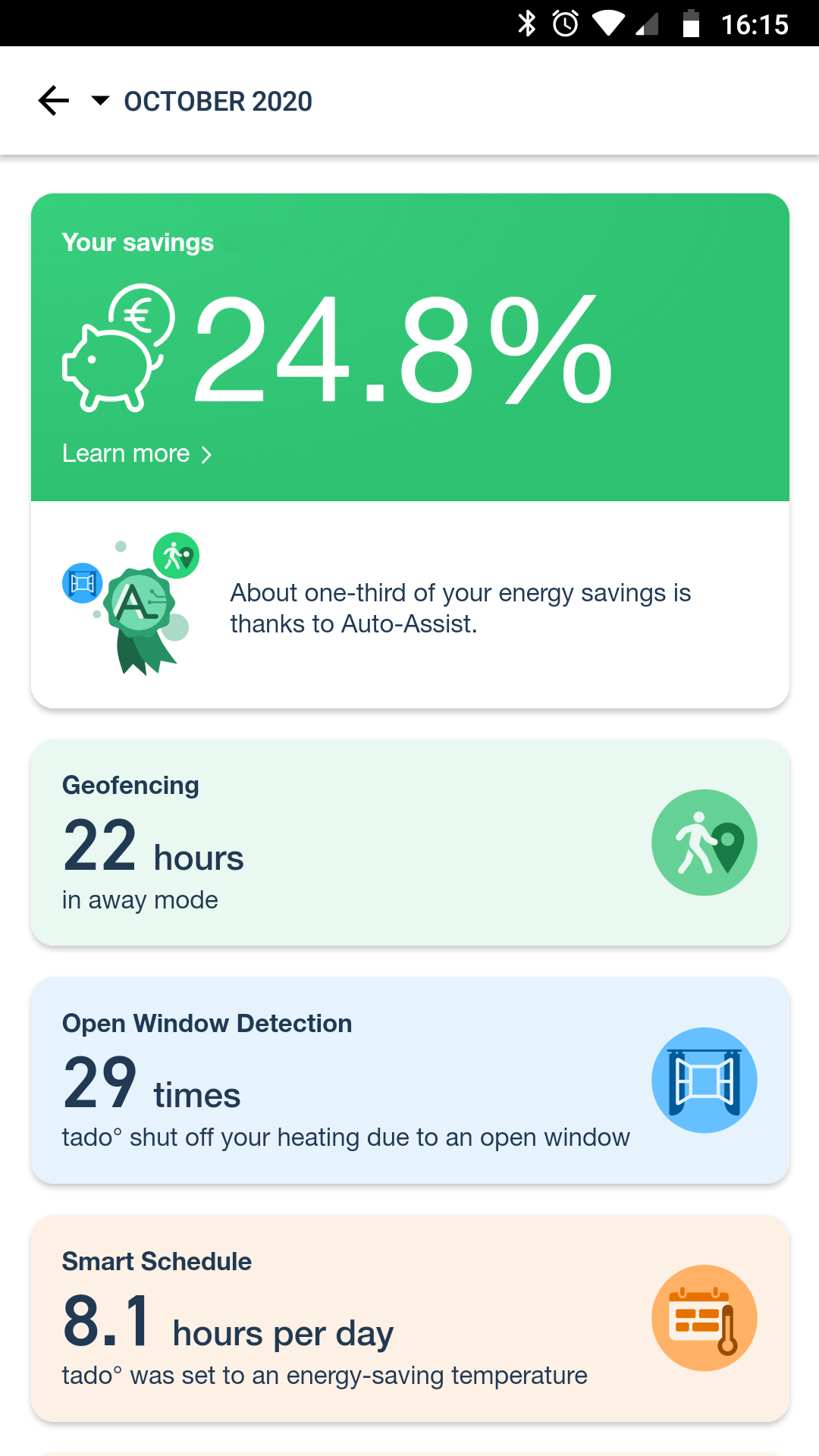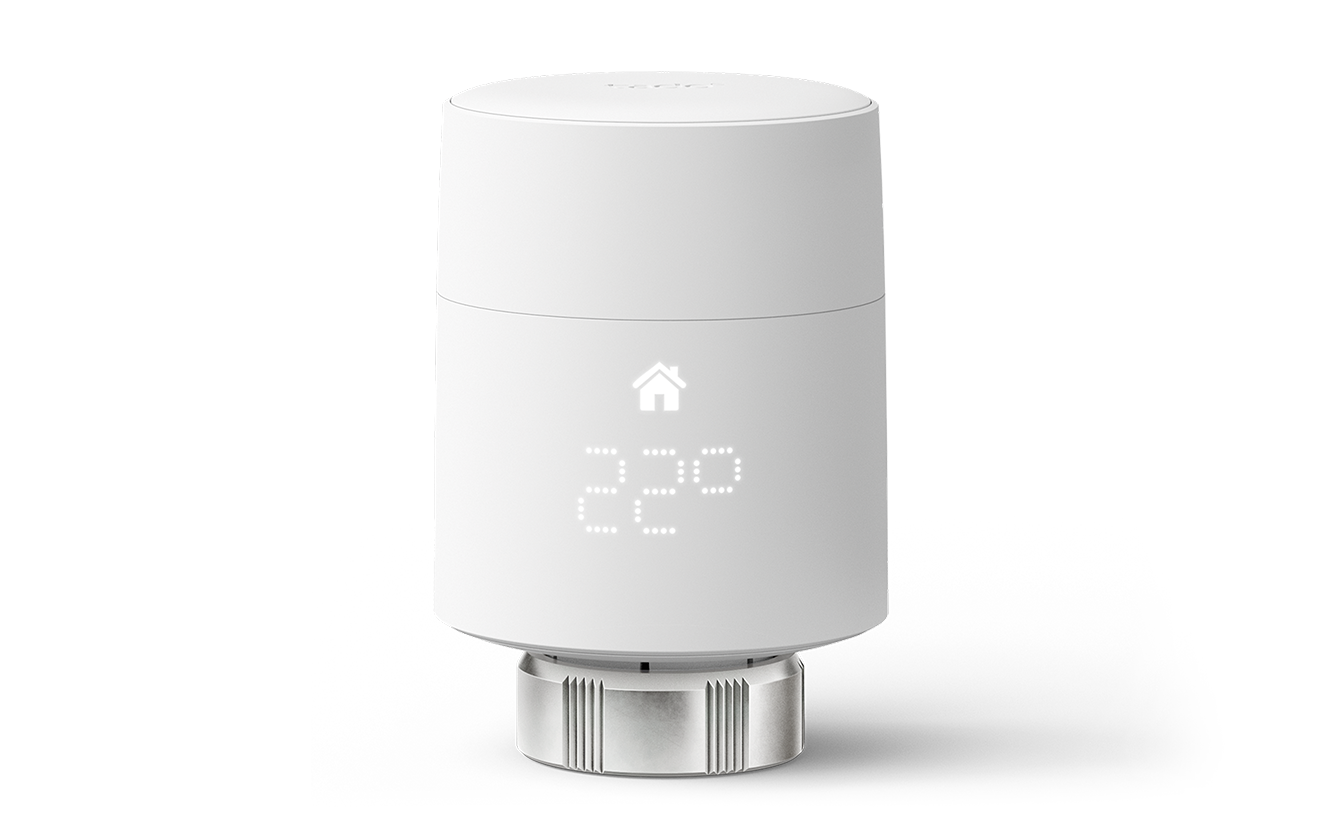Nothing beats the feeling of a warm and cosy home, but conventional heating controls often don’t deliver it. Smart heating provides better control over the way you heat your home. With features like geolocation and open window detection, they can save you money, too!

What are smart heating controls?
Smart heating controls apply digital technology to managing your home heating. Many link to the internet, using information such as weather forecasts to help improve performance and save money. Smart heating controls are one of the best smart upgrades you can apply to your house. And given that space and water heating account for about a third of the average UK home’s carbon dioxide (CO2) emissions, controlling them more accurately can benefit the environment, too.
Smart controls are usually a big improvement over existing heating systems, particularly compared to old-style controls such as analogue thermostats. These could often make for wild swings in temperature as the heating cut in and out, with the result that rooms often felt too hot or cold. Smart controls also let you manage timing more accurately. They’re much better than a basic timer that imposes the same heating regime throughout the week and weekend.
Smart heating controls are a useful upgrade to even a modern central heating system, controlled by a digital programmer. And where radiators are already fitted with thermostatic radiator valves (TRVs), adding smart thermostats lets you control the heating separately – and more accurately – in individual rooms.
Why do I need them?
Smart heating controls can make your home feel a lot more comfortable in several ways. On the most basic level, their digital thermostats are more accurate than older analogue ones. If you’re replacing an old rotary-style analogue thermostat you’ll notice far more consistent heating.
Smart heating can simplify your life – for example, the Nest thermostat learns quickly how you want your home heated, then looks after it for you. Some systems use geolocation to determine when you’re home. They can turn the heating off when no-one’s in, and pre-heat the house when you’re on your way back. Geolocation also means your heating knows when you’re on holiday, without you needing to remember to turn it off.
Smart heating offers much more programmability, if you want it. Systems like Tado’s support anything from a simple schedule, right up to multiple time blocks per room. You can even set completely different schedules for each day of the week! Some systems include optional radiator thermostats. Fit these everywhere and you can heat only the room or rooms you’re using, without wasting energy on empty ones.
This brings us to the USP of smart heating: it saves you money! While we usually take manufacturers’ money-saving claims with a pinch of salt, there’s no doubt that smart thermostats can return a saving over time. This will be most noticeable on systems with geolocation, and features such as weather compensation and open window detection.

How do smart heating controls work?
You can break smart heating controls down into two broad types: those which replace a standard heating or hot water programmer, and those which control radiators.
Smart heating programmers control your heating by switching the boiler on and off exactly like a traditional programmer would. The only difference is that they’re more intelligent. The Nest thermostat, for example, uses internet services that help it learn your heating habits and preferences. Like many systems, it also uses local weather information to compensate for especially warm or cold days. Smart heating may supply less heat if a sunny day is forecast.
Some smart systems – such as Tado – can be extended to control your hot water. This is ideal, as it means all the smart benefits apply there, too. Now when you go away, neither your heating or hot water will run until you come home.
Many people just buy one smart thermostat to control their heating, but smart radiator thermostats can be a useful addition. These typically replace the head on an existing thermostatic radiator valve, and use a motor to open and close it. Smart radiator thermostats aren’t connected to the boiler: they communicate with the main smart thermostat, which turns the boiler on and off as needed.

Radiator controls can be great if you want your heating to reflect the way you actually use different rooms. For example, you might want to heat only children’s bedrooms in the early evening, and only your own later. Apart from being more convenient, this saves the cost of heating all the bedrooms for the whole evening.
Do they work without the internet?
Smart heating controls usually need the internet to function properly. If you lose your connection you should still have manual control, but you’ll lose advanced features like geolocation. You may also find that schedules stop working. Our smart heating reviews will always tell you exactly what happens to a device with the internet switched off.
Can I install smart heating controls?
Smart heating controls can be harder to install than other smart home devices, but they shouldn’t be too challenging for the competent DIY-er. The main thing to remember is that many boilers are controlled by mains voltage circuits! It’s extremely important to isolate the heating system from the power before uncovering any of its controls.
Smart heating controllers usually replace the main hall thermostat or programmer unit. Their setup instructions will usually guide you through marking, disconnecting and reconnecting the necessary wires. It’s a similar process if you’re also replacing the hot water controller.

Where you have a hall thermostat, with a programmer on the boiler itself, the smart controller usually replaces the thermostat. With the programmer set to be on constantly, the smart device will ensure it only runs when needed. You may find any new controllers are smaller, so there may be filling or painting to do to tidy things up. As with any electrical work, if you’re in any doubt, leave it to the professionals! A qualified heating engineer should be happy to help.
It’s typically more simple to install smart radiator valves. The old valve’s thermostatic head will usually unscrew, after which you simply screw the smart head on. You may need an adaptor – these often come in the box. Before you buy, check the new control is compatible with your existing valves.
Finally, smart heating systems often require a starter kit, containing their own hub or internet bridge. It’s usually a case of plugging these in to your router, and using the app to configure all the devices.
How do I get the best out them?
Heating can be complex – particularly in bigger homes – and getting it ‘just so’ can take time. ‘Learning’ systems are designed to take the hassle out of it – you simply set the temperatures you want, and after a few days the smart thermostat will take over. On other systems you’ll need to set up some schedules, then tweak them until you get the temperatures you want.
It’s important to install the relevant app. You’ll need it to control some features, and it will usually give you more advanced control over schedules and settings. On systems with geolocation you’ll need to make sure everyone with a smartphone has the app and is included. You don’t want your kids shivering after college until you come home from work!
For maximum savings we’d recommend a system that supports geolocation and, ideally, can control your hot water if it’s also heated by gas.
Are smart heating controls worth it?
In short, smart heating controls are probably the most worthwhile smart home upgrade. For most users there’s a good chance they’ll make your home more comfortable and save you money. This is most likely if you’ve currently got old heating controls – particularly if you’re reliant on an old analogue thermostat – but it could apply to anyone.
A system that includes water control will cost more, but it could pay for itself over time – particularly if you tend to go away a lot and forget to turn the water off. It’s less certain that smart radiator thermostats will save you money. You can only fit them on radiators that already have TRVs, which should already mean that individual rooms will be well temperature-controlled.
Smart radiator controls suit larger homes where you don’t use every room, or where you use different rooms at different times. If you don’t already have TRVs, fitting them means draining the system – it’s probably best left to a heating engineer. It’s an expensive job, although it should deliver some savings even if you don’t subsequently add smart controls.
Fix the basics first
We should point out that you should only really consider smart heating controls after, or alongside, more basic upgrades. Increasing your loft insulation, fitting double glazing or buying some draft excluders may all help you create a more comfortable home. They’ll all help save energy, too.
To sum up, if you only fit one type of smart device, heating controls are probably the one to go for. They’re not the cheapest smart devices, and advanced smart heating systems can be expensive to install, but they do make a big difference to the comfort of your home. Choose the right setup and you could save lots of money, too – but check your insulation and draft-proofing is up to scratch first.
